Blueberry propagation protocol by tissue culture method
Blueberry (Vaccinieae, Vaccinioideae, Ericaceae) is a deciduous or evergreen shrub. Blueberry fruit contains anthocyanin, unsaturated fatty acids, calcium, potassium, zinc, iron, and other elements. The blueberry tissue culture method helps us to proliferate this valuable plant.
Blueberries are recognized as one of the top five health foods by the International Food and Agriculture Organization. Also, the fruit of this plant is known as the king of fruits due to the presence of antioxidants and its high properties. This has caused the fruits of the Berry family to become one of the world’s most promising fruit tree species for human nutrition and health in the future.
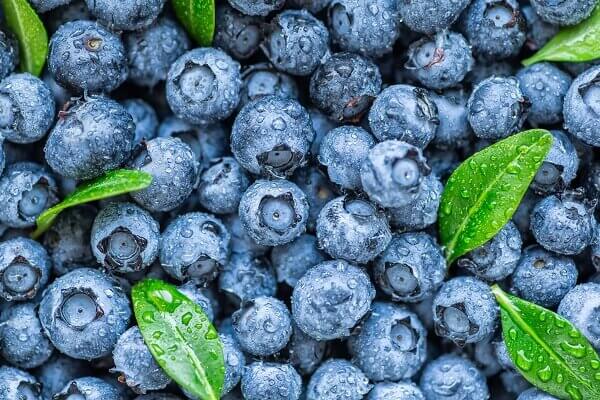
In recent years, with the increasing understanding of the impact of blueberry fruit on human health, the demand for consumption of the fruit of this plant in the world markets has increased steadily. This sharp increase in demand has caused the rapid expansion of the blueberry production industry, especially in the seedling and planting stage. Therefore, there is an urgent need for the quick production of blueberry seedlings.
As market demand for blueberries continues to improve, the scale and area of planting continue to expand, and yields have increased significantly. The multiplication factor of this plant through grafting is slow-going. The grafting is challenging for plants’ proliferation and quality supply to the market.

Plant tissue culture is a technology in which the tissue, organ, and cell isolated from the plant are cultured aseptically in an environment containing nutrients and plant hormones, and the whole plant is regenerated.
Plant tissue culture has significant advantages in growing seedlings, such as high propagation speed, seedling health, high quality and efficiency, and no time limit. The production of blueberry seedlings by tissue culture method is rapidly expanding and becoming popular in the world markets.
Materials and methods
Selection and surface sterilization of explants:
The selected explants are best obtained from the buds of young leaves (without petioles) and shoots (without leaves) of completely healthy two-year-old blueberries kept in the Screen House. Different methods are used for sterilization, and below mentioned the two most used methods:
The first method of sterilizing blueberry seedlings
The selected explants were washed under running water for 6 minutes and then sterilized five times with ddH2O. In the next step, explants are sterilized with 75% alcohol for 20 seconds and then with 2% (v/v) NaClO for 5 to 8 minutes, respectively. Finally, sterilized explants should be washed with distilled water.
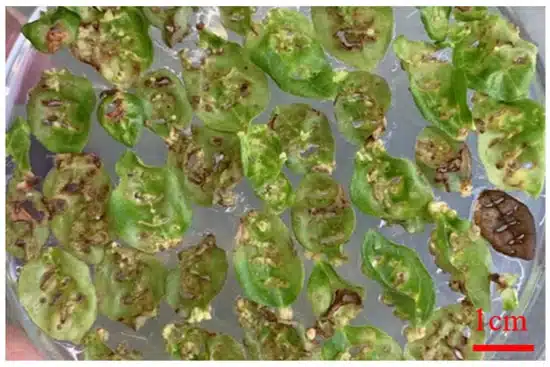
The second method of sterilizing blueberry seedlings
- Wash the young sprouts with running water for 1 hour.
- Then disinfect the explants in 70% ethanol for 2 minutes.
- The explants are disinfected for 6 minutes with 0.1% mercury chloride solution with three drops of Tween.
- In the last step, the explants should be carefully drained (Three times in sterile distilled water).
Culture medium and hormonal compounds
The WPM culture medium and the AN culture medium (Anderson) were used as the primary culture medium. We consider the composition of 25 to 30 grams per liter of sucrose, 7.5 to 8 grams per liter of agar, and Ph 4.5 to 5 as a base. For the stem regeneration stage,2 mg/L (mg/liter) of Zeatin hormone was used.
For the WPM culture medium, it is recommended to use 25 grams per liter of sucrose and 6.5 grams per liter of agar. The recommended pH level for this culture medium is also 5.2.
Since plant growth regulators (plant hormones) are sensitive to heat, they should be added to the culture medium after autoclaving and under laminar airflow using a filter.
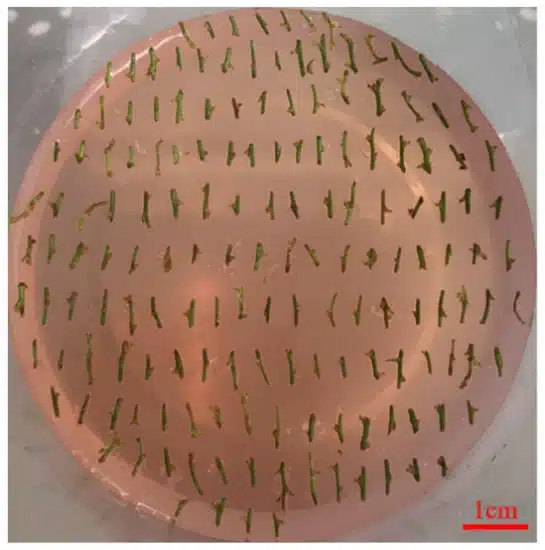
Vitamins in the culture medium
Adenine Hemisulphate (Adenine Hemisulphate) in the amount of 80 mg/L, Myo-Inositol (Myo-Inositol) in the amount of 100 mg/L, and Thiamin (Thiamin-HCl) in the amount of 0.4 mg/L, the vitamins required for the blueberry AN culture medium in They are the stemming stage.
macro and micro elements of the culture medium (salts)
Ammonium nitrate (NH4NO3) mg/l-1 400, monosodium phosphate (NaH2PO4) mg/l-1 330.6, magnesium sulfate (MgSO4) mg/l-1 180.54, potassium nitrate (KNO3) mg/l- 1 480, calcium chloride (CaCl2) 332 mg/l-1, sodium ferric acid (FeNaEDTA) 73.4 mg/l-1, boric acid (H3BO3) 6.2 mg/l-1, part of the suggested composition for salts And the required elements of the blueberry culture medium.
Processing stage, propagation of micro-branches
Proliferation & Multiplication
Microshoots in blueberry tissue culture are usually stimulated between concentrations of 0.5 to 2 mg/l-1 mg/l-1 of Zeatin hormone. At this stage, there is no need to change the concentration of vitamins, salts, and other compounds of the principal culture medium. It is also not recommended to use activated charcoal at this stage.

After obtaining the branches of the specified height, transplant them after every 5-6 weeks. After cultivation, the explants were grown at 25-25 ± 1 °C until a photoperiod of 16 hours with a light intensity of 70-50 μmol/m-2.s-1 provided by white fluorescent lamps depending on the different genotypes. , keep
The optimal growth medium for blueberry sprouts in the WPM containing 0.1 mg/L CPPU, 0.4 mg/L 2-ip was reported to be significantly better for the growth and health of the sprouts.
Rooting
The use of activated charcoal (Charcoal Activated) in the amount of 0.8 mg/l-1 and the use of indole butyric acid (IBA) hormone in the amount of 0.8 mg/l-1 is necessary for rooting at this stage. The primary culture medium can remain with the same ingredients, and there is no need to change the concentration of sucrose and other elements. Also, it is recommended to stabilize the pH of the blueberry cultivation medium at 4.5 to 5.

The optimal rooting medium in Murashig and Skoog’s 1.2 medium (MS 2.1) contained 0.2 mg/l naphthylacetic acid (NAA), which significantly shortened the rooting rate and also increased the secondary root growth rate (Manual for making and preparing MS culture medium)
Blueberry callus formation
According to a report published on January 23, 2023, in the MDPI database, the optimal medium for callus induction is WPM (wood plant medium) containing 0.2 mg/L forchlorfenuron (CPPU), 0.2 mg/L 2-isopenteneladin. (2-ip) with the callus induction rate of 97% and callus differentiation rate of 71% of the best results obtained. In this method, blueberry leaves are used as explants. The optimal secondary culture of WPM leaf callus culture medium containing 0.3 mg/l CPPU with an increase factor of 24% has been reported.
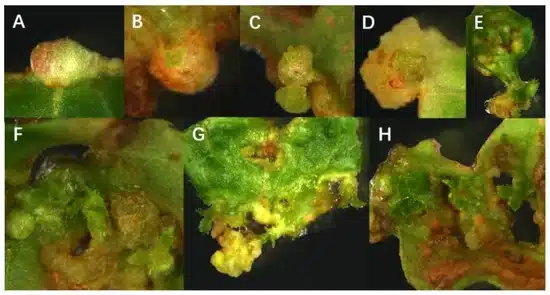
Note
Be sure to pay attention to the fact that what is mentioned in this article is only a guide to get an overview of tissue culture and micropropagation of blueberry seedlings, and this protocol is not sufficient for commercial blueberry propagation. It is necessary to purchase the commercial propagation protocol from reliable sources or set it in plant biotechnology laboratories.
Resources


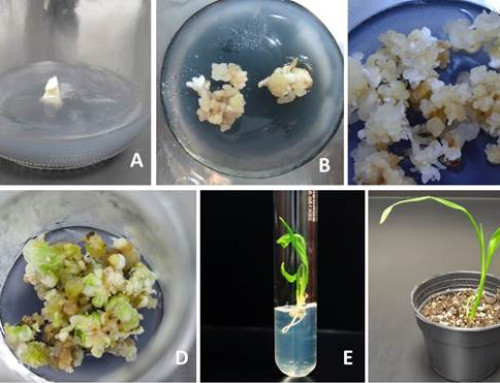
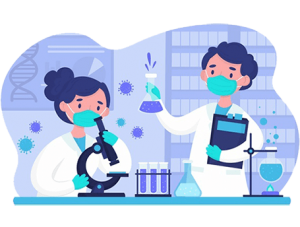
Leave A Comment